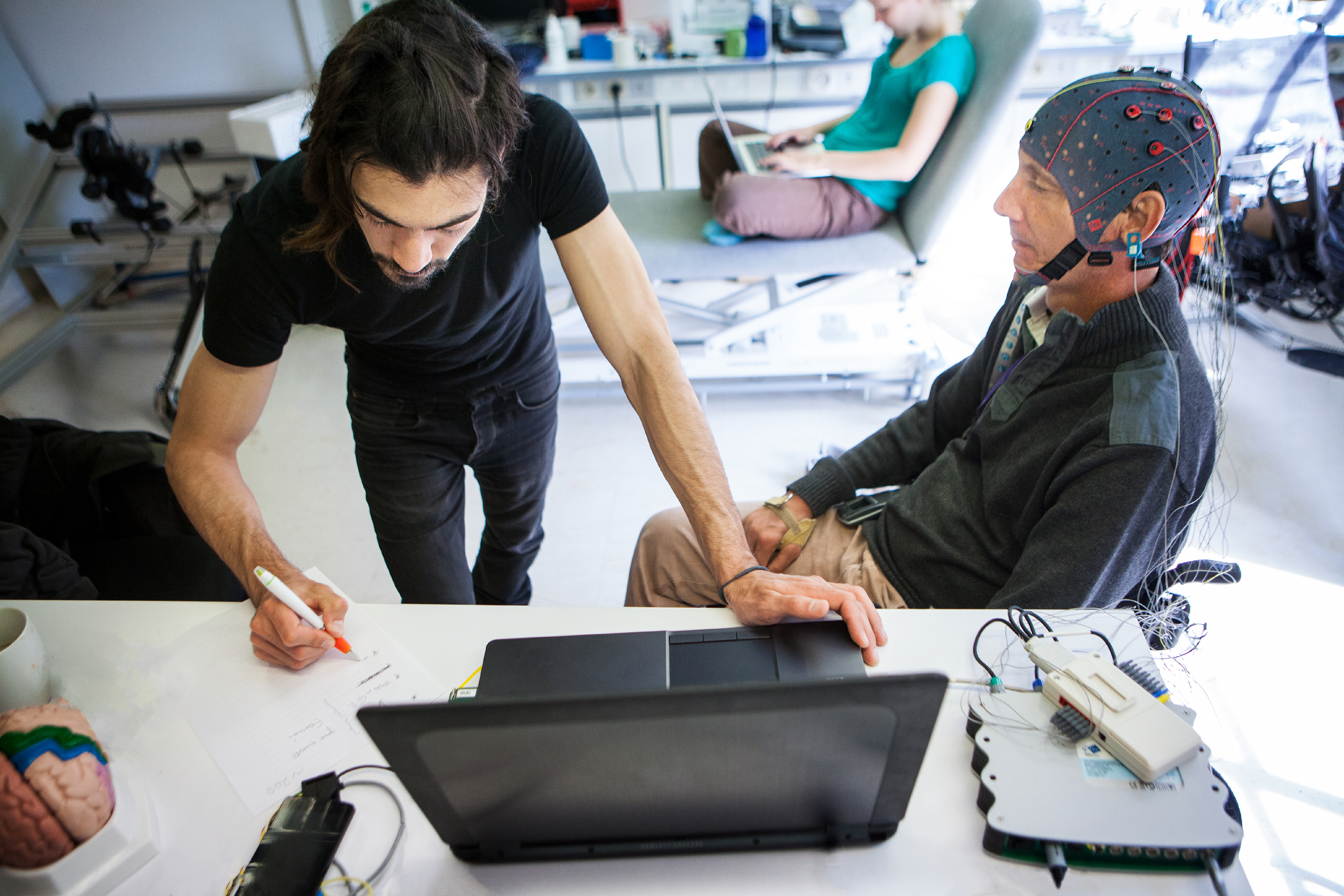How We’ll Eventually Control Everything With Our Minds
Credit to Author: Daniel Oberhaus| Date: Mon, 11 Sep 2017 14:00:00 +0000
The ability to control the world around you with only your mind has been a feature of some of the best science fiction stories ever written, but even today the idea sounds pretty futuristic. Still, neuroscientists around the world are hard at work trying to figure out how to make a digital interface for the brain and in recent years have made remarkable strides toward this goal. Although this technology is still in its infancy, it’s not quite as hard to imagine abandoning touch screens for mind control anymore.
For the most part, brain-computer interfaces (BCIs) are currently being created only for people who have suffered debilitating injuries that left them partially or completely paralyzed.
One such person is Dennis Degray, who found himself paralyzed from the neck down after he slipped and fell in the rain in 2007. But earlier this year, neuroscientists at Stanford University managed to help Degray break a world record for typing using only his mind.
The success is due in part to Jaimie Henderson, a neurosurgeon at Stanford who implanted two tic-tac size electrode arrays in Degray’s brain. These electrode arrays monitor brain activity and work to decode complex electrical signals fired by neurons in the motor cortex, the control center for body movement. These decoded signals are then used to interface with a virtual keyboard. Using this method, Degray was able to accurately type a record-breaking 39 characters (or about eight words) a minute using only his mind.
The results were undoubtedly impressive and are early steps in restoring a degree of independence to those who are completely or partially paralyzed. As more and more everyday products are connected to the internet as part of the Internet of Things, it’s conceivable that the same people who were entirely immobile will be able to manipulate almost anything in their environment using a brain-machine interface that is also connected to the internet.
“There is a great deal of interest in providing the ability to control one’s environment via a BCI, and we hope to be able to demonstrate further progress in this area in the not-too-distant future,” Henderson told me. “I think the next 10 years will be a very exciting time of rapid growth for the field of BCI.”
Others are even more optimistic. SpaceX and Tesla CEO Elon Musk has launched Neuralink, a company dedicated to creating “neural lace,” a brain-computer interface. Neuralink has already raised $27 million in funding.
The downside of connecting anything to the internet is, of course, a significant drop in the security of that device. Insecure IoT devices have enabled the largest botnet attacks in history, such as the recent Mirai botnet that temporarily took down huge swaths of the internet using a Denial of Service attacks. When these internet-connected devices are actually implanted and interfacing with someone’s brain, this brings up entirely new security issues, such as the possibility of ‘brain jacking.’ It also brings up serious ethical questions about culpability. For instance, who is guilty when a brain-controlled computer kills?

Potential security problems will have to be solved before we have a future where everyone controls their environments using their minds. But in the nearer term, less invasive forms of brain-computer interfaces are already here and carry significantly less risk for the user.
Headsets have already been used to successfully race drones and control MindDesktop, a generalized brain interface for Windows. Although these devices are less risky than actually implanting a device in your gray stuff upstairs, they also are lacking when it comes to performance—it takes about 20 seconds to type a single character with MindDesktop. Still, they are relatively cheap since they use modified consumer electronics. In the case of MindDesktop, this is an $800 electroencephalogram (a device that measures electrical activity in the brain).
“The major challenge of external BCIs is the thickness and varying density of the scalp, skull and coverings over the brain,” Henderson said. “This keeps us from being able to ‘eavesdrop’ on the neurons in an accurate way, which we think is essential for high-performance BCI systems. For the foreseeable future, the only way to get close to the neurons and accurately decode their activity is with some kind of surgical implant.”
As other researchers attempt to build a better external brain-computer interface, Henderson and the BCI implant researchers have a number of their own technical challenges to overcome. For starters, they hope to get more fine grained ‘pictures’ of neural activity in the brain from their sensors, which will allow more accurate decoding of brain signals at higher speeds. Then there’s the question of figuring out how to make these systems so that people can use them outside of a laboratory setting.
“Making these systems autonomous so they don’t require a technician or caregiver intervention is a very high priority, given that one of our major goals is restoring independence to people with paralysis,” said Henderson. “We are actively addressing many of these issues in our ongoing research program.”
Dear Future is a partnership with CNET that will explore the people, companies, and communities that are ushering in the future we were all promised. Follow along here.